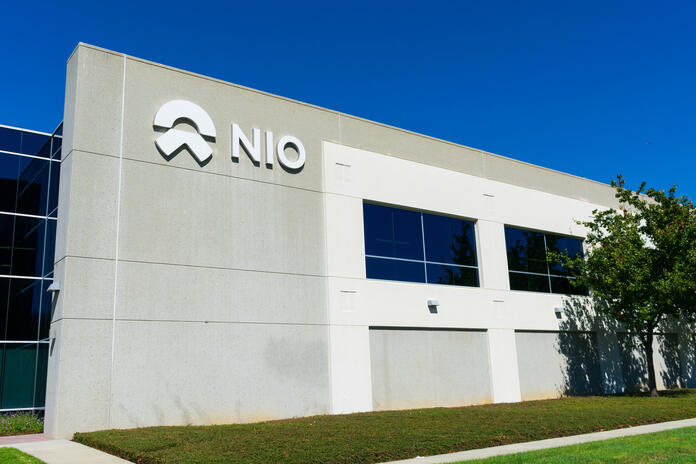NIO (NYSE:NIO) stands as one of the most prominent and fluctuating players in the electric vehicle (EV) stock realm. The company entered U.S. markets in 2018 and raised concerns about its sustainability as a “going concern” by early 2020, a common prelude to bankruptcy proceedings.
In Q1 2020, NIO seemed at the brink of collapse, with bankruptcy looming due to the added hurdles brought on by the COVID-19 pandemic. However, NIO successfully secured funding from strategic investors, and the Chinese government intervened to rescue the struggling company.
NIO’s Stock Performance Since February 2021
NIO experienced an extraordinary surge, skyrocketing over 1,100% in 2020. This bullish run extended into early 2021, culminating in an all-time high share price of $62.84 in February. Nonetheless, by the end of 2021, the stock had closed in the red, and the downward trend persisted into the following year.
As of 2023, NIO shares have declined by 19.5% year-to-date. In contrast, Chinese EV counterparts like Li Auto (NASDAQ:LI) and Xpeng Motors (NYSE:XPEV) are posting gains, and even U.S. competitor Tesla (NASDAQ:TSLA) has surged by 77% during the year, despite remaining below its November 2021 highs.
NIO’s recent announcement of a 10% workforce reduction, citing fierce competition in the EV industry, further raises concerns. The EV industry, particularly in China, has witnessed intensified competition, compelling even NIO, which initially avoided entering an EV price war, to reduce vehicle prices to remain competitive. NIO, once dubbed the “Tesla of China,” now struggles to uphold that title as China-based BYD appears poised to claim the crown as the largest EV seller, surpassing Tesla.
Challenges Facing NIO Stock and Its Decline
While the general downturn in growth-oriented stocks is partly responsible for NIO’s decline, several company-specific factors are exacerbating the negative momentum. These include:
Disappointing delivery performance, with monthly deliveries averaging around 12,600 in the first 10 months of 2023.
A decline in gross margins to a mere 1% in Q2 2023, following previous double-digit margins.
Ongoing cash burn, a common trait among startup EV companies, which prompted NIO to raise $1 billion through a convertible note issuance earlier this year. Market concerns regarding potential additional fundraising led to NIO’s clarification to allay investor fears.
NIO failed to meet the high expectations set by the market a couple of years ago, even as Chinese rivals, particularly Li Auto, outperformed in terms of cumulative deliveries.
NIO Stock Projection for 2025
The near-term outlook not only poses challenges for NIO but for the entire EV industry. By 2025, however, the situation is expected to stabilize. On a macro level, the intense price competition within the EV industry should normalize, while global interest rates are anticipated to be lower.
NIO also plans to enter the U.S. market by 2025, although it may face a disadvantage in the lucrative American automotive market due to tax credit rules that do not apply to cars imported from China. With increasingly price-conscious EV buyers, the absence of a $7,500 EV tax credit could impact NIO’s prospects in the U.S.
In terms of margins, NIO anticipates double-digit gross margins in the latter half of 2023. A combination of higher margins and increased deliveries may propel NIO stock upward. Furthermore, NIO stock appears favorably positioned in terms of risk-reward dynamics, with a next 12-month price-to-sales multiple of 1.17x, which is among the lowest in its peer group, as compared to XPEV and LI trading at 2.47x and 1.97x, respectively.
Morgan Stanley forecasts that NIO’s stock will double in the next year, while Citi’s Street-high target of $19.20 implies a potential upside of 141%. Given the appealing risk-reward dynamics, it wouldn’t be surprising if NIO more than doubles from its current levels by 2025.
Why NIO Stock Appears to Be a Promising Investment
NIO has established a strong presence in the premium EV market and has developed an extensive network of battery-swapping stations. Despite facing formidable challenges, both on a macroeconomic and company-specific level in the short term, the company has previously navigated even tougher conditions and emerged stronger.
While NIO’s stock may continue to exhibit volatility in the short term, it possesses qualities that can help it weather the ongoing slump in the EV industry. These include a strong brand, an appealing product portfolio, a reasonably robust balance sheet, and the ability to secure funding from strategic investors. NIO’s stock has the potential to yield substantial returns over the next few years, likely trading at significantly higher levels by 2025 compared to its current depressed prices.
Featured Image: Megapixl















